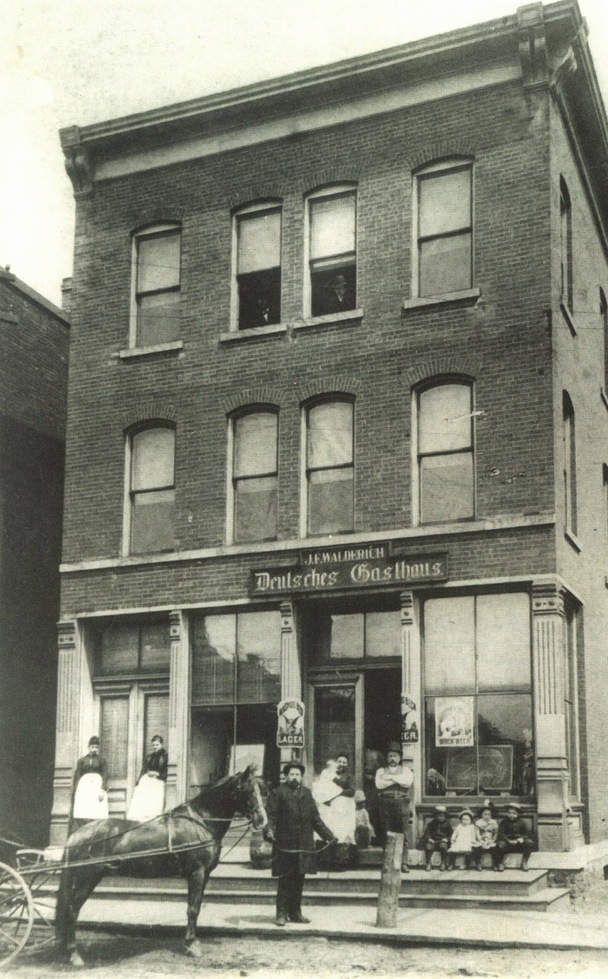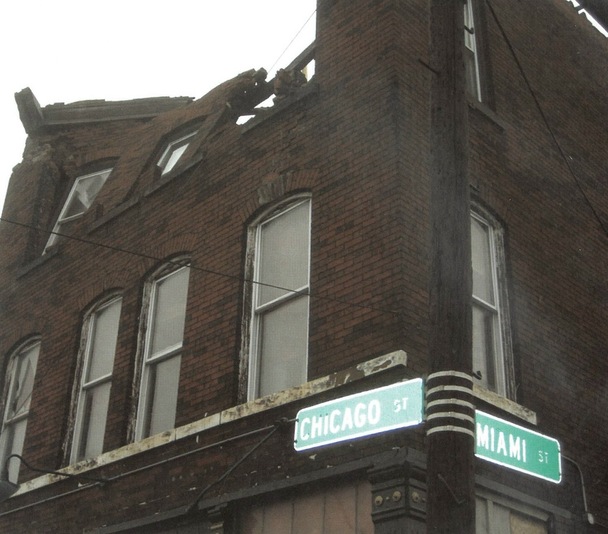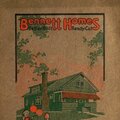
The Deutsches Gasthaus of John F. Walterich (misspelled Walderich), c. August 1888. Walterich (arms folded) poses with wife Anna K. and their children. The Pfaff sisters, Guest House employees, stand at left.
Jim Walterich Collection
Some buildings are more than looks, more than style, more than “the grammar of their design.” The people that passed through a building or the plots that were hatched in it also determine the building’s value. Until its demolition, the building at 115 Chicago Street was just one of two canal-era taverns still standing in Buffalo. Before two winter windstorms did heavy damage to the building’s top floor and roof, McBride’s – as it was most recently known – served the First Ward for more than 125 years.
Johann Frederick Walterich was born on December 30, 1849 in Münstermaifeld, Germany and came to the United States as a teenager in the 1860s. Johann found his way to Western New York where he married Anna Kathrina Kohnen in New Oregon in the Town of Eden. John and Anna had ten children and moved to Buffalo where the family owned and operated various businesses including a saloon at 631 Howard St.
From 1886 to 1896, Walterich operated Deutsches Gasthaus (German Guest House) at 115 Chicago Street. The family lived on the third floor while the second was used for boarders – there was space for 40 – and the first for the tavern and dining room.

McBride’s after the January 30th windstorm damaged the roof and third floor.
Clarence Picard Photo, 2008
The brick building at the corner of Chicago and Miami streets has long been an important place in First Ward neighborhood life. Local legend states the 1866 Fenian Invasion of Canada was planned in the three-story building but some local preservationists dispute the claim, arguing the building was built a couple of decades after the invasion. The 1872 Buffalo Atlas shows a brick building on the same plot.
Later, in Walterich’s time, the local Irish called it the Ghost House, playing on the mispronunciation of the German name and rumors that murders had previously happened in the building. Nevertheless, the German tavern was incorporated into the Irish neighborhood. Coal men from Pennsylvania would wait in the tavern while their coal was being broken into usable pieces at the coal breaker across the street. Ship hands would spend the night while their ship was unloaded and reloaded.
The Walterich family left Buffalo for the clean air of New Oregon in 1896, but 115 Chicago St. continued on as a central part of the community. In 1913 a proud Irishman named Mike Quinn owned the tavern. Quinn and members of St. Brigid’s Catholic Church met at Quinn’s Pub to plan a parade for their motherland’s patron saint, Patrick. More than 5,000 hardy Irish-Buffalonians marched through freezing temperatures in the first parade on March 17, 1913 and the tradition continues 95 years later.
Quinn’s eventually became Kitty O’Malley’s and finally McBride’s. Owner William J. Crawford planned to move the building closer to the original canal terminus at the central wharf. In the end, the January 10th and 30th windstorms did too much damage to keep the building alive. Permits and Inspections Commissioner Richard M. Tobe ordered the building to be demolished on March 10th.
Maybe it was meant to be. The building that was a center of First Ward life never left its Chicago Street home. Instead it will fade into Buffalo lore like so many other buildings that were a part of making Buffalo what it is today.









